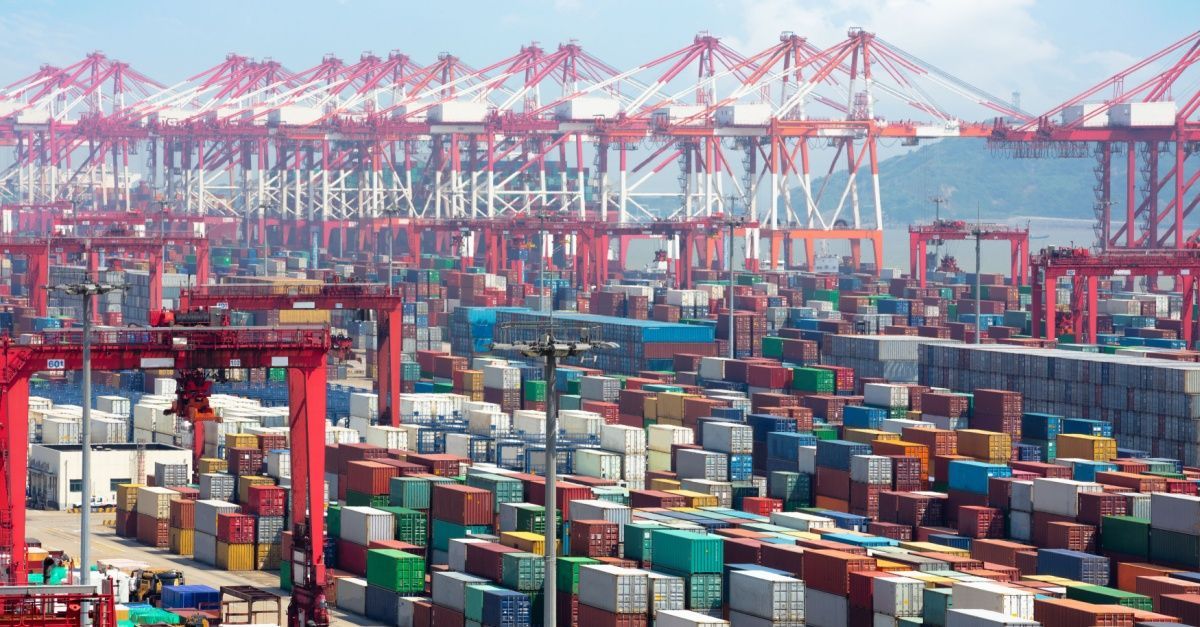Managing a Mass Disruption to Trucking
Blog Post CTA
Logistics doesn’t operate in a vacuum. As shippers know, even the best-laid plans and well-oiled supply chains can be upended in minutes due to an external disruption, whether it’s a pandemic, a geopolitical conflict, or a natural disaster.
The latest disruption was the tragic collapse of the Francis Scott Key Bridge near Baltimore after a container ship struck one of the bridge’s piers. Here are seven headlines to stay up to date on the latest happenings at the Port of Baltimore, along with other news in the supply chain and trucking industry:
Relief Efforts for the Francis Scott Key Bridge
The U.S. agency that governs trucking, the Federal Motor Carrier Safety Administration (FMCSA), extended its emergency declaration for drivers who are providing assistance related to the collapse of the Francis Scott Key Bridge.
As
Trucking Dive reported, the emergency declaration relaxes electronic logging device regulations for drivers supporting relief efforts. The declaration extends the 11-hour driving time restriction by two hours.
State governments have also taken action. Maryland, Pennsylvania, and Virginia waived International Fuel Tax Association requirements for truck drivers hauling to or from the port. Maryland extended the tax deadline from April 30 to June 30. Virginia issued 30-day permits for container hauling until the end of the emergency.
Access to the Port of Baltimore
As local trucking companies and state governments work on relief efforts, the U.S. Army Corps of Engineers is working to open a limited access channel to the Port of Baltimore, according to an article in Supply Chain Dive.
The channel will be limited to 280 feet wide and 35 feet deep and will be used by barge container traffic and roll-on/roll-off vessels, helping with the transport of items such as automobiles and
farm equipment. It is expected to open by the end of this month.
The permanent channel, which is 700 feet wide and 50 feet deep, should reopen by the end of May.
Truckers Find Workarounds
In the meantime, logistics companies are coming up with creative solutions to keep freight moving. Evans Delivery Company’s Land Transportation brand devised a “Drop Lot” solution, according to the American Journal of Transportation.
Baltimore truckers can drop off containers in a lot along I-95, about 40 miles north of Richmond. From there, Norfolk drivers pick up the containers and haul them over to the Port of Virginia for shipment. The system works in reverse, too.
The system helps smaller and medium-sized trucking companies, which may not have as large a network or ease of access to transfer cargo insurance between partners. The solution also deploys artificial intelligence to track cargo throughout the supply chain and help the various parties
communicate in real time.
XPO Greenlights Yellow Terminals
In other logistics news, LTL carrier XPO is beginning to open up service centers that it acquired from the bankrupt trucking company Yellow, formerly called YRC.
Yellow held an auction back in December, and XPO made a bid for Yellow’s terminals. XPO ended up purchasing 26 owned terminals and two leased terminals from the bankrupt firm, FreightWaves reported. In total, that’s about 2,900 doors – a 10% to 15% increase in XPO’s total door capacity.
So far, XPO has opened three facilities: one in Nashville, Tennessee; another in Grand Junction, Colorado; and the third in Nogales, Arizona. That brings XPO’s total service centers to 297.
“With a deeper presence in strategic markets, we are introducing new premium services and expanding our existing offerings, such as our cross-border service with Mexico,” said XPO CEO Mario Harik.
XPO isn’t the only
LTL carrier opening up terminals that formerly belonged to Yellow. Saia acquired 28 terminals from Yellow and opened one of them this month in
Missoula, Montana. Meanwhile, Roadrunner opened a facility in Atlanta that used to be operated by Yellow.
A Normalizing Truck Market
LTL carriers might be speedily opening up terminals, but truck OEMs are starting to see a slowdown as the market normalizes.
According to
Transport Topics, Daimler Truck North America sold 46,220 trucks and buses in Q1. While it seems like a hefty number, it’s actually a 5% YOY decrease. The manufacturer, which owns brands such as Freightliner and Western Star, sold 48,891 trucks and buses in the first quarter of 2023.
The OEM is seeing a normalizing marketing across its truck segments and its geographies. For global sales this year, the company expects to sell between 490,000 and 510,00 vehicles, a drop from last year’s 526,053 vehicles.
“Reasons for the normalization include the persistently challenging economic conditions and the absence of catchup effects from pent-up demand that was exceptionally high during the previous two years,” Daimler Truck Chairman Martin Daum said.
But one segment is bucking the trend. Daimler’s battery-electric sales jumped 183% to 813 units, up from 287 in Q1 2023.
Calling All Truck Drivers
Despite a slight slowdown in truck manufacturing, trucking demand remains high, and so does the need for drivers.
The FMCSA proposed a rule that would help fill the need for drivers by loosening testing regulations for commercial driver's licenses (CDL). The rule would do a few things,
FreightWaves reported. It would allow commercial learner’s permit (CLP) holders who passed CDL skills tests to operate trucks without CDL holders sitting on the passenger’s side. The proposed rule would also allow CDL applicants to take skills tests outside of their home states. Finally, the rule would eliminate a 14-day waiting period after receiving a CLP to take the CDL skills test.
As with any
regulation, the rule has some strong advocates as well as some staunch opponents.
The Owner-Operator Independent Drivers Association opposes the FMCSA’s proposed rule. It worries that drivers won’t receive adequate mentorship or training in challenging conditions if a CDL holder is not in the passenger seat. Safety advocates fear what the streamlined rules could do for FMCSA’s safety objectives.
But the American Trucking Associations believes the rule would streamline the process and attract more drivers to the field. The group pegs the driver shortage reaching 160,000 by 2030. The Commercial Vehicle Training Association also supports the rule, particularly revisions that shorten wait times related to license processing.
TikTok’s Trucker
An unconventional method might draw more people into the trucking workforce.
A social media creator dubbed “Alex the Trucking Guy” has accrued more than a million and a half followers across Instagram, TikTok, and YouTube as he documents what it’s like to be a truck driver.
“I started posting behind-the-scenes contents of the life of a truck driver, like who we are and really putting a face to these giant machines that you see on the road,” the content creator told
Fox Business.
Alex eventually got into the trucking industry after dropping out of college and realizing a degree wasn’t for him. He aims to show that trade professions can be a great option for many people who want steady careers without accruing student loan debt.
Keeping Supply Chains Moving in the Face of Disruption
In the supply chain industry, risk is unpredictable, and disruption could happen at the blink of an eye. Entourage Freight Solutions provides steady services that can help you navigate a turbulent logistics environment and receive important information in real time. Entourage Freight Solutions offers the following services, and many more:
- Our LTL service provides on-demand access to capacity, along with real-time data and peace of mind in this high-stakes world.
- Our Freight Management lets your team stay organized across inbound and outbound logistics, tracking market capacity and using automation notifications to keep everyone informed.
- Our Refrigerated transport provides expertise in everything from finished goods to raw materials, ensuring products arrive on time and in top condition.
Request a quote today to see how Entourage Freight Solutions can solve your key logistics pain points.









